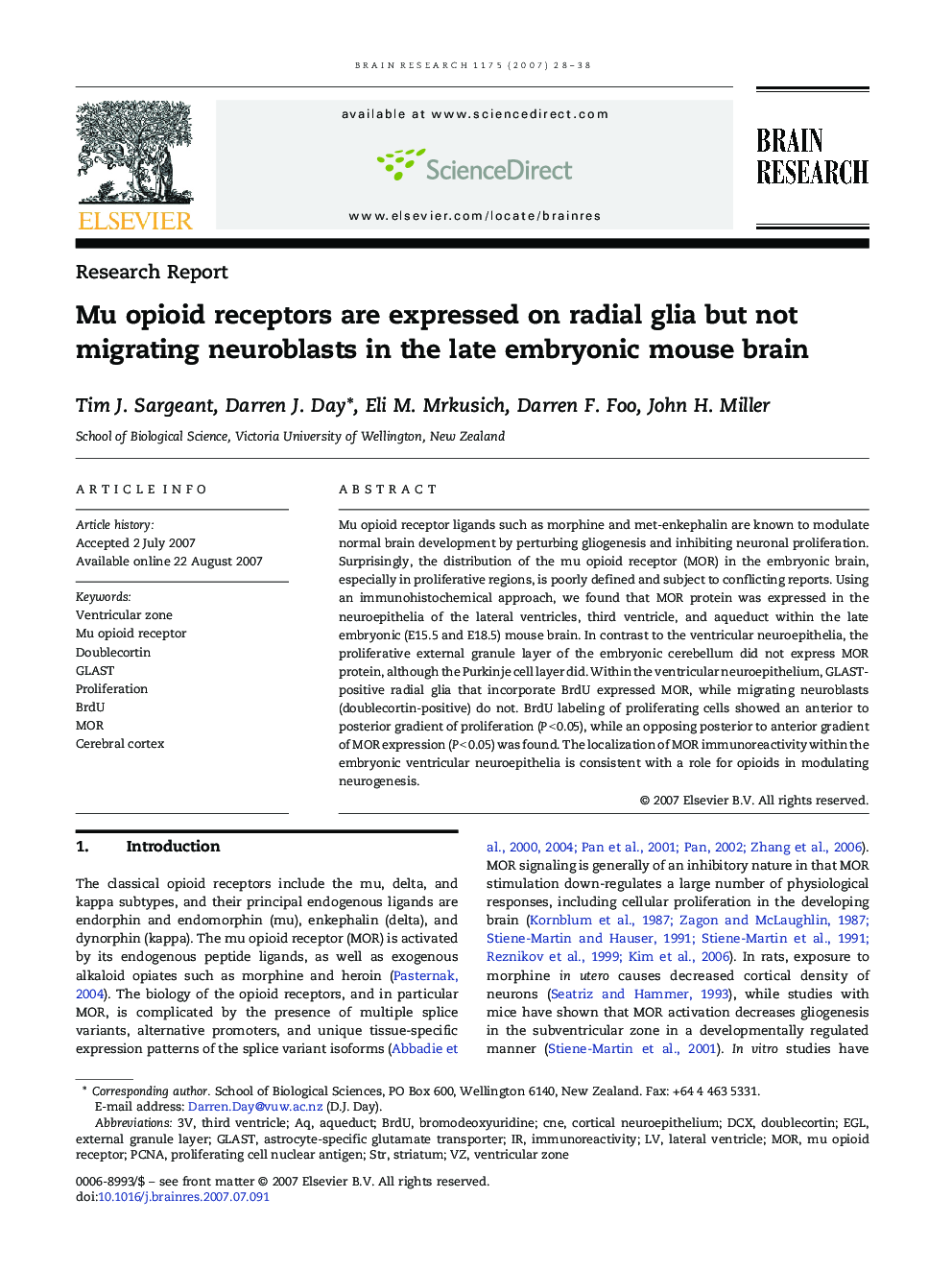| Article ID | Journal | Published Year | Pages | File Type |
|---|---|---|---|---|
| 4330551 | Brain Research | 2007 | 11 Pages |
Mu opioid receptor ligands such as morphine and met-enkephalin are known to modulate normal brain development by perturbing gliogenesis and inhibiting neuronal proliferation. Surprisingly, the distribution of the mu opioid receptor (MOR) in the embryonic brain, especially in proliferative regions, is poorly defined and subject to conflicting reports. Using an immunohistochemical approach, we found that MOR protein was expressed in the neuroepithelia of the lateral ventricles, third ventricle, and aqueduct within the late embryonic (E15.5 and E18.5) mouse brain. In contrast to the ventricular neuroepithelia, the proliferative external granule layer of the embryonic cerebellum did not express MOR protein, although the Purkinje cell layer did. Within the ventricular neuroepithelium, GLAST-positive radial glia that incorporate BrdU expressed MOR, while migrating neuroblasts (doublecortin-positive) do not. BrdU labeling of proliferating cells showed an anterior to posterior gradient of proliferation (P < 0.05), while an opposing posterior to anterior gradient of MOR expression (P < 0.05) was found. The localization of MOR immunoreactivity within the embryonic ventricular neuroepithelia is consistent with a role for opioids in modulating neurogenesis.
